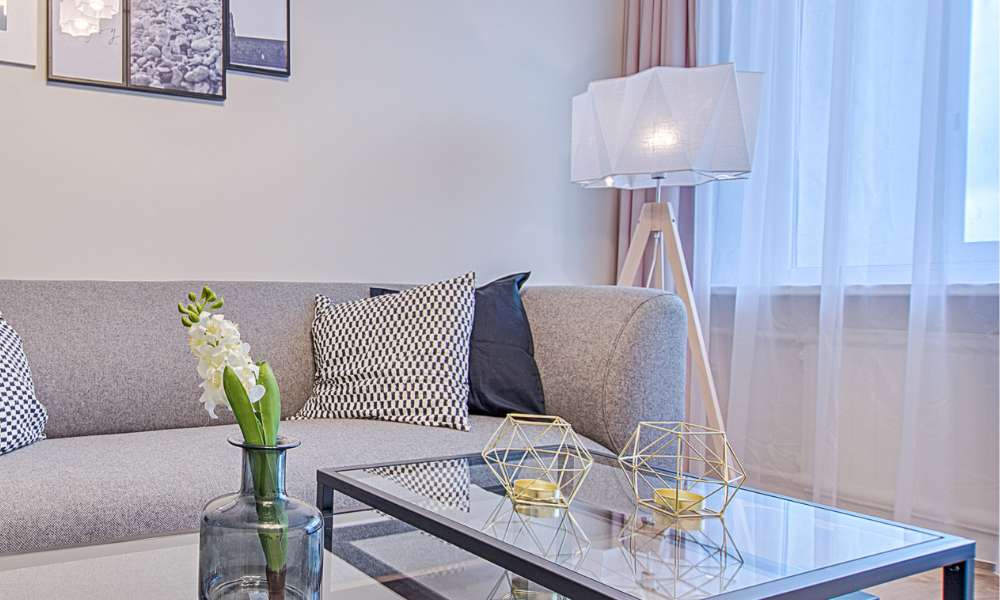A floor lamp is more than just a lighting fixture—it’s a statement piece that influences ambiance, functionality, and aesthetics. But how tall should a floor lamp be to achieve the perfect balance of illumination and style? Choosing the right height ensures optimal lighting for reading, relaxing, or enhancing your room’s decor. Too short, and the light may be ineffective; too tall, and it can create harsh, unbalanced lighting. This guide explores the ideal floor lamp height for various spaces, helping you create a well-lit, visually appealing environment tailored to your needs.
Understanding Standard Floor Lamp Heights
Floor lamps typically range between 55 to 72 inches in height. This variation exists to cater to different functional and aesthetic needs. Some of the most common types include:
- Torchiere Lamps – Standing at the taller end of the spectrum, these lamps project light upward, providing indirect ambient lighting that disperses evenly throughout the room.
- Arc Lamps – Designed with a sweeping, curved arm, these lamps often extend higher to ensure the light source hovers over seating areas or reading spots.
- Reading Lamps – Usually shorter, positioned at a height conducive to direct lighting, making them perfect for placement beside sofas or armchairs.
- Tripod Lamps – A stylish and stable design, generally within the mid-height range, offering balanced illumination without overwhelming the decor.
Understanding these variations helps homeowners and designers choose the right floor light height based on the desired function and aesthetic appeal.
Choosing the Right Floor Lamp Height for Different Spaces
Living Room
A floor lamp in the living room should complement seating arrangements and overall decor. For a reading lamp placed next to a sofa or armchair, an ideal height is around 58 to 64 inches, ensuring the bottom of the shade is at eye level when seated. This prevents excessive glare while maintaining a cozy atmosphere.
Bedroom
In a bedroom setting, floor lamps are often used for accent lighting or as an alternative to bedside table lamps. The height should be aligned with nightstands and the mattress level, typically around 55 to 60 inches. This ensures the lighting remains soft yet sufficient for reading without being intrusive.
Office or Study Room
For task lighting in an office or study, precision is key. A ground lamp positioned near a desk should range between 60 and 70 inches to provide focused lighting without creating harsh shadows. Adjustable models are highly recommended to accommodate varying workspaces.
Dining Area or Open Spaces
In dining areas or large open spaces, floor lamps often serve as secondary lighting sources. Taller lamps, typically around 65 to 72 inches, work best for ambient lighting, ensuring an even glow that complements overhead fixtures without overwhelming the space.
Floor Lamp Height and Ceiling Height Considerations
The proportion between a floor light and ceiling height significantly influences the room’s visual balance. For rooms with low ceilings (8 feet or less), shorter lamps (55-60 inches) help maintain a sense of openness. Conversely, rooms with high ceilings (10 feet or more) can accommodate taller lamps (over 65 inches) to fill the vertical space effectively without appearing disproportionate.
Adjustable Floor Lamps: A Flexible Option
Adjustable-height floor lamps offer versatility, making them an excellent choice for multi-functional spaces. Whether used for reading, ambient lighting, or accentuating decor, these lamps can adapt to various needs. Features like telescoping poles or rotating heads enhance functionality, allowing users to modify the lighting direction and intensity based on specific requirements.
Common Floor Lamp Placement Mistakes to Avoid
Choosing the wrong height can lead to poor lighting distribution and discomfort. Here are common mistakes and how to avoid them:
- Too Short or Too Tall Lamps – A lamp that is too short may not provide adequate illumination, while an overly tall lamp can create harsh lighting.
- Incorrect Shade Placement – The shade should be positioned to prevent direct exposure to the bulb, reducing glare and enhancing visual comfort.
- Poor Spacing – Lamps placed too close to furniture can restrict movement, while those too far may not effectively serve their purpose.
Complementing Floor Lamps with Other Light Sources
To achieve a well-lit room, floor lamps should be paired with complementary light sources. A layered lighting approach, combining floor lamps with table lamps, sconces, and overhead fixtures, ensures balanced illumination. This technique enhances both functionality and aesthetic appeal, preventing over-reliance on a single light source.
Conclusion
Selecting the right floor light height is crucial for both functionality and aesthetics. By considering factors such as room type, ceiling height, and lamp style, homeowners can create a well-balanced lighting scheme that enhances comfort and decor. Whether opting for a standard or adjustable ground lamp, the key is to ensure the light source aligns with the intended purpose while harmonizing with the overall space. Explore different styles and heights to find the perfect ground lamp that elevates both illumination and design.

